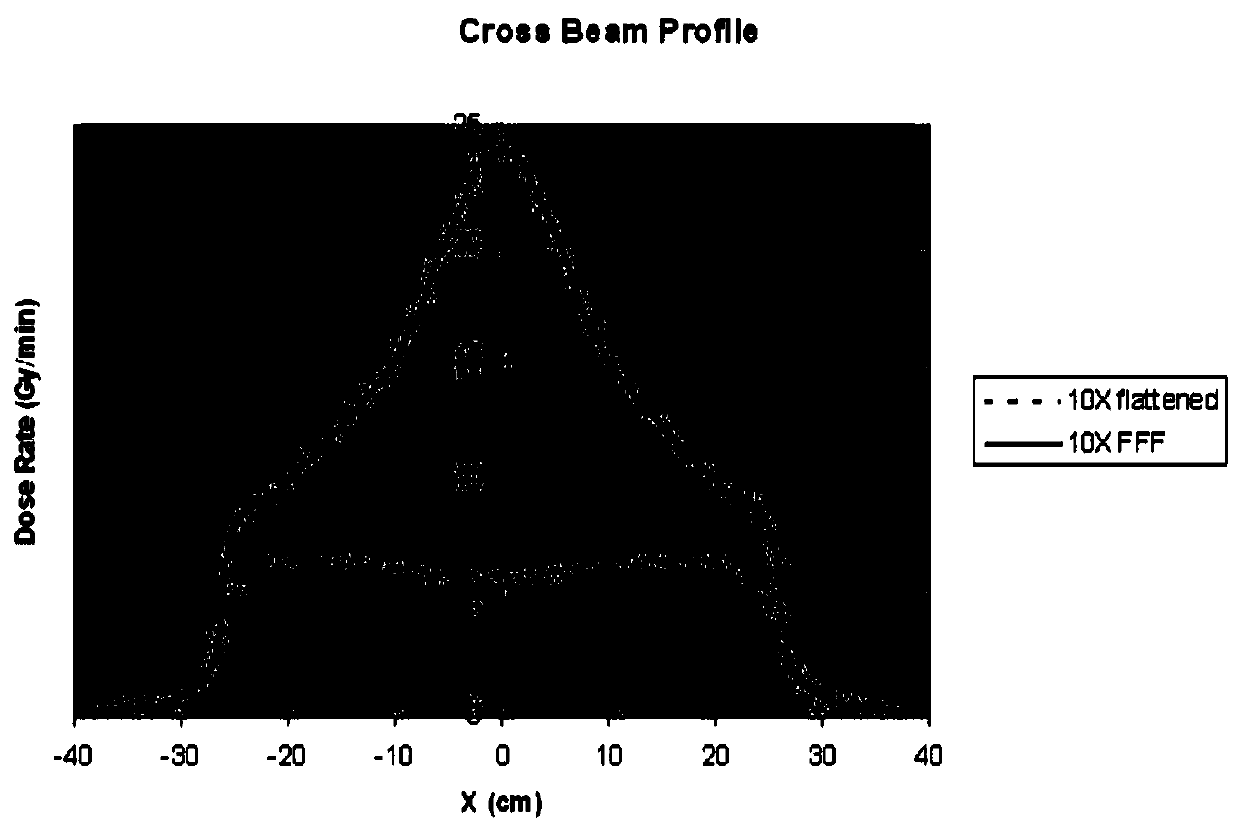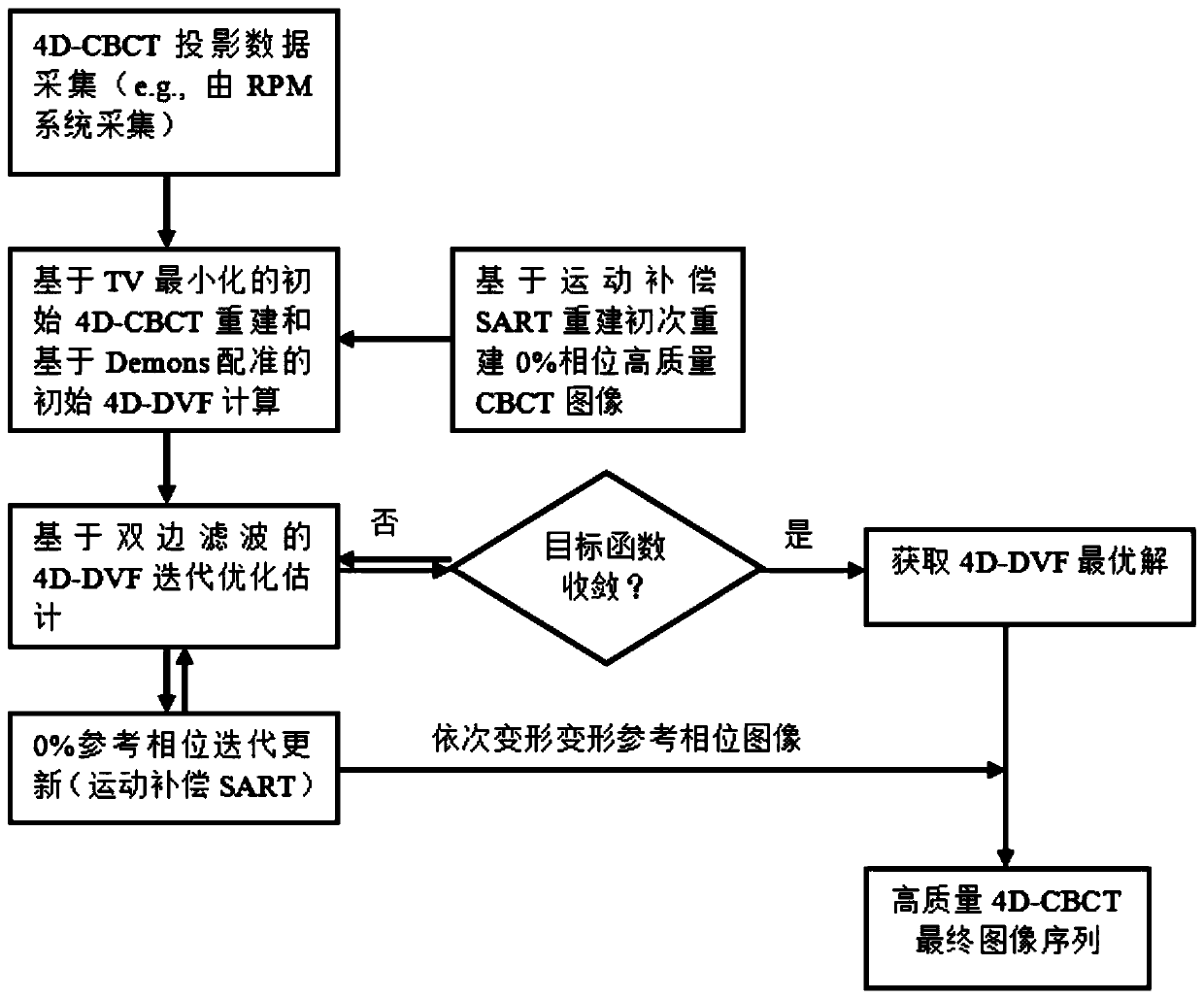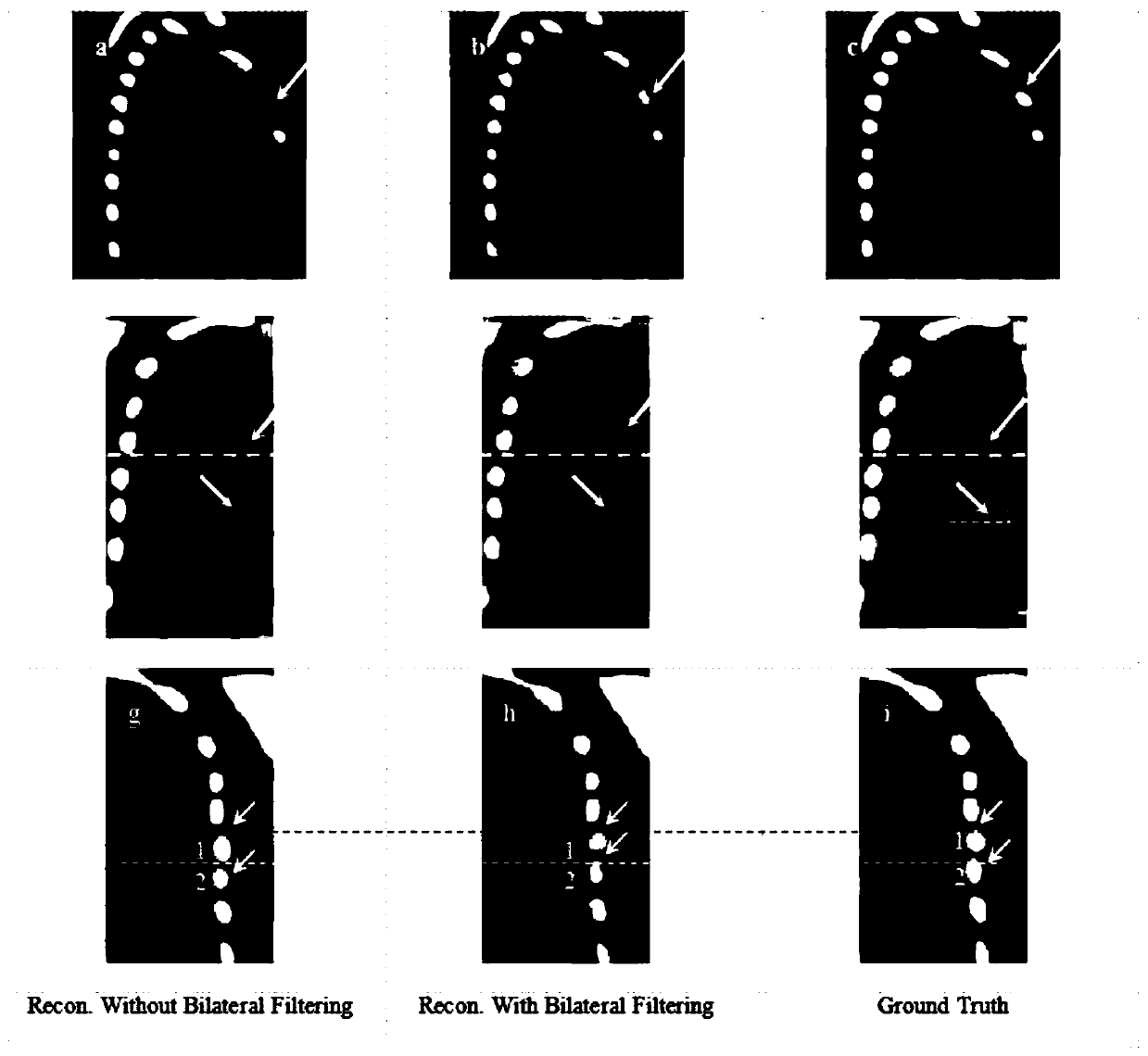Motion compensation high-quality 4D-CBCT image reconstruction method based on bilateral filtering
A 4D-CBCT and motion compensation technology, applied in 2D image generation, image generation, image data processing, etc., can solve problems such as poor image quality, many artifacts, and image quality that needs to be further improved to improve accuracy , the effect of enhancing security
- Summary
- Abstract
- Description
- Claims
- Application Information
AI Technical Summary
Problems solved by technology
Method used
Image
Examples
Embodiment 1
[0061] Firstly, the effectiveness of the algorithm is verified on the 4D NCAT digital phantom. The breathing cycle of the 4D phantom is 4s. The maximum motion of the diaphragm along the superior medial (SI) is 20 mm, and the maximum motion of the chest anteroposterior (AP) is 12 mm. The phantom has 10 phases, and each phase simulates 20 projections for DVF estimation and 4D-CBCT reconstruction. The phantom image size is 256x256x150 and the voxel size is 1x1x1 mm 3 . The projection size is 300x240x20 and the projection voxel size is 1x1x1 mm 3 .
[0062] image 3 Shown are 40% phase reconstructed images obtained with and without sliding motion constraints. 3(a) shows the sagittal view of the reconstructed 40% phase obtained without bilateral filtering; image 3(b) shows the same sagittal slice reconstructed with bilateral filtering; 3(c) shows the phantom gold standard reference picture; 3(d), 3(e) and 3(f) are the regions of interest (Region Of Interest, ROI), where th...
PUM
 Login to View More
Login to View More Abstract
Description
Claims
Application Information
 Login to View More
Login to View More - R&D
- Intellectual Property
- Life Sciences
- Materials
- Tech Scout
- Unparalleled Data Quality
- Higher Quality Content
- 60% Fewer Hallucinations
Browse by: Latest US Patents, China's latest patents, Technical Efficacy Thesaurus, Application Domain, Technology Topic, Popular Technical Reports.
© 2025 PatSnap. All rights reserved.Legal|Privacy policy|Modern Slavery Act Transparency Statement|Sitemap|About US| Contact US: help@patsnap.com



